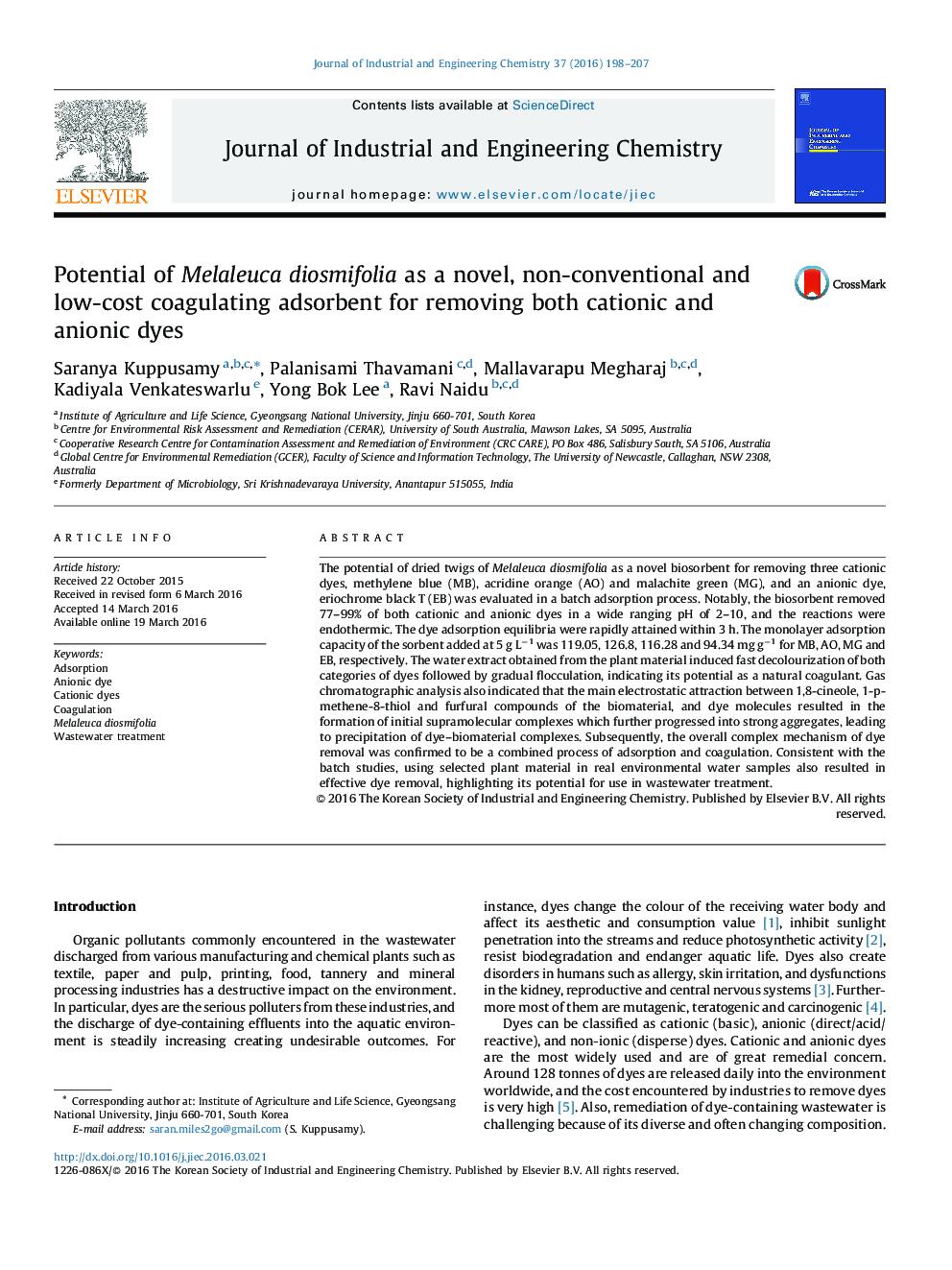| کد مقاله | کد نشریه | سال انتشار | مقاله انگلیسی | نسخه تمام متن |
|---|---|---|---|---|
| 227285 | 464820 | 2016 | 10 صفحه PDF | دانلود رایگان |

• Melaleuca diosmifolia as a biosorbent effectively removed commercial dyes.
• Formation of initial supramolecular complexes led to flocculation.
• Adsorption mechanism was validated following adsorption kinetics.
• The overall complex mechanism combined both coagulation and adsorption.
• Biosorbent indicated great potential in removing dyes from environmental samples.
The potential of dried twigs of Melaleuca diosmifolia as a novel biosorbent for removing three cationic dyes, methylene blue (MB), acridine orange (AO) and malachite green (MG), and an anionic dye, eriochrome black T (EB) was evaluated in a batch adsorption process. Notably, the biosorbent removed 77–99% of both cationic and anionic dyes in a wide ranging pH of 2–10, and the reactions were endothermic. The dye adsorption equilibria were rapidly attained within 3 h. The monolayer adsorption capacity of the sorbent added at 5 g L−1 was 119.05, 126.8, 116.28 and 94.34 mg g−1 for MB, AO, MG and EB, respectively. The water extract obtained from the plant material induced fast decolourization of both categories of dyes followed by gradual flocculation, indicating its potential as a natural coagulant. Gas chromatographic analysis also indicated that the main electrostatic attraction between 1,8-cineole, 1-p-methene-8-thiol and furfural compounds of the biomaterial, and dye molecules resulted in the formation of initial supramolecular complexes which further progressed into strong aggregates, leading to precipitation of dye–biomaterial complexes. Subsequently, the overall complex mechanism of dye removal was confirmed to be a combined process of adsorption and coagulation. Consistent with the batch studies, using selected plant material in real environmental water samples also resulted in effective dye removal, highlighting its potential for use in wastewater treatment.
Figure optionsDownload as PowerPoint slide
Journal: Journal of Industrial and Engineering Chemistry - Volume 37, 25 May 2016, Pages 198–207